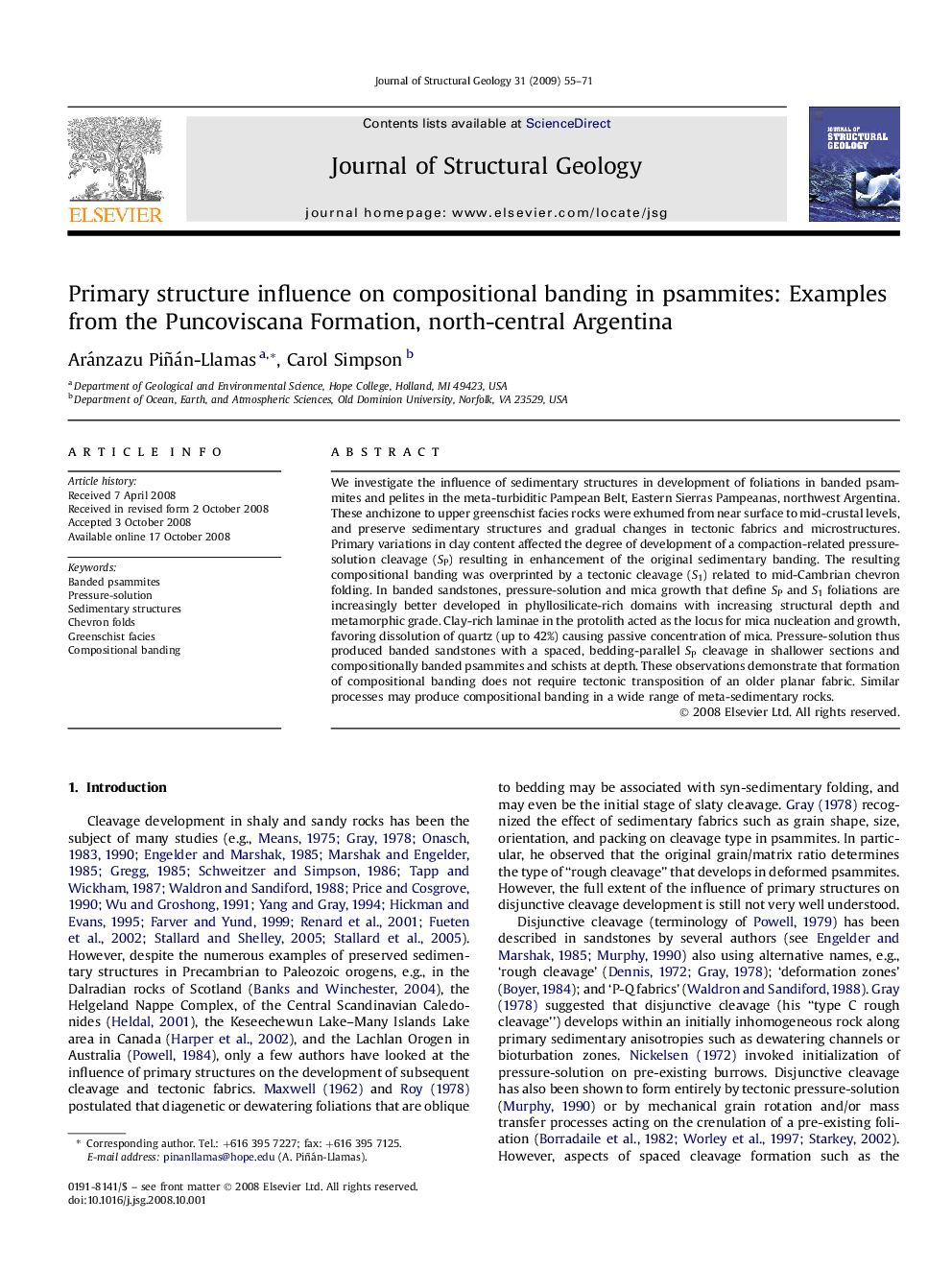| Article ID | Journal | Published Year | Pages | File Type |
|---|---|---|---|---|
| 4734303 | Journal of Structural Geology | 2009 | 17 Pages |
We investigate the influence of sedimentary structures in development of foliations in banded psammites and pelites in the meta-turbiditic Pampean Belt, Eastern Sierras Pampeanas, northwest Argentina. These anchizone to upper greenschist facies rocks were exhumed from near surface to mid-crustal levels, and preserve sedimentary structures and gradual changes in tectonic fabrics and microstructures. Primary variations in clay content affected the degree of development of a compaction-related pressure-solution cleavage (SP) resulting in enhancement of the original sedimentary banding. The resulting compositional banding was overprinted by a tectonic cleavage (S1) related to mid-Cambrian chevron folding. In banded sandstones, pressure-solution and mica growth that define SP and S1 foliations are increasingly better developed in phyllosilicate-rich domains with increasing structural depth and metamorphic grade. Clay-rich laminae in the protolith acted as the locus for mica nucleation and growth, favoring dissolution of quartz (up to 42%) causing passive concentration of mica. Pressure-solution thus produced banded sandstones with a spaced, bedding-parallel SP cleavage in shallower sections and compositionally banded psammites and schists at depth. These observations demonstrate that formation of compositional banding does not require tectonic transposition of an older planar fabric. Similar processes may produce compositional banding in a wide range of meta-sedimentary rocks.
